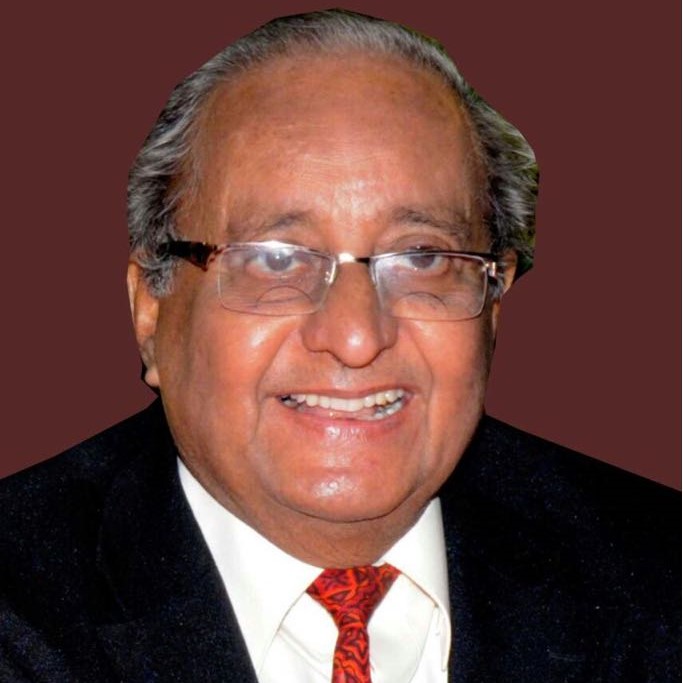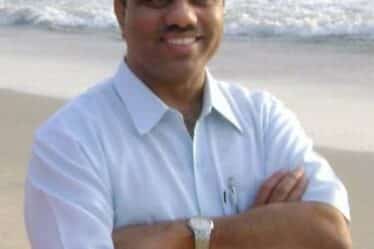
Born on June 2, 1934, Dr. Balswarup Chaubey—who preferred his initials, BS, to his first name, Balswarup—was the son of Bal Mukund Chaubey, a superintendent of police. He studied at New English High School in Nagpur before pursuing his medical education at Government Medical College (GMC), Nagpur, where he later earned his MD in Medicine.
An alumnus of the class of 1952, Dr. Chaubey dedicated his entire career to GMC, Nagpur. He began as a lecturer in Medicine and steadily rose through the ranks, serving as Head of the Department from 1972 to 1976 and again from 1978 to 1983. His contributions to medical education and administration culminated in his appointment as Dean of GMC, Nagpur, from 1983 to 1987 and again from 1988 to 1992.
Yet, it was not his administrative role but his excellence as a physician and teacher that defined him. He was revered for his clinical skill, compassionate care, and ability to inspire students—qualities that made him far more cherished in the wards and classrooms than in the Dean’s office.
Dr. Chaubey was a remarkable physician, following in the footsteps of stalwarts like Dr. Ramesh Nigam, Dr. P.K. Devi, Dr. C. Balakrishnan, and Dr. J.N. Berry. He preceded several distinguished physicians who occupied the chair he once held—the position of Professor of Medicine. Against all odds, he built a formidable Department of Medicine, relying on his vision, talent, and sheer willpower. He stood out in his ability to uphold and shape the art and science of bedside medicine in a manner that few could emulate.
As the ultimate authority in the Department of Medicine, Dr. Chaubey maintained exacting standards. Impeccably dressed in a long white apron, a blue tie, sharply pressed trousers, and polished shoes, he would park his blue Fiat in the GMCH premises precisely one minute before 8:00 AM. Quick, focused, and sharp, his brilliance and passion were palpable as he commenced his rounds at exactly 8:00 AM every day. We, the terrified registrars, would watch in awe as he examined patients and made diagnoses with an efficiency and accuracy that remain unparalleled. He taught medicine in an era when technology had yet to encroach upon the patient’s bedside, demonstrating with finesse how to blend art with the science of diagnosis.
A clinician in the mold of Osler, he firmly believed that most diagnoses could be made at the bedside through meticulous history-taking, the adept use of a stethoscope, and a thorough physical examination. His ward rounds were unparalleled teaching sessions. We would hang onto every word he uttered, observing his facial expressions and emotional cues, often perplexed by the workings of his mind. We wondered why he asked certain questions or veered into unexpected areas during patient examinations. With remarkable speed, he would pick up key points from history and physical examination, generate hypotheses, and unveil the elusive disorder. He required only moments to determine what was wrong and how to proceed. He was never one to gather an excessive amount of data or indulge in leisurely contemplation; rather, he was fast and frugal, blending thought and action to arrive at swift differential diagnoses. “Technology alone is not enough,” he famously remarked. “It is technology married with the art of medicine, married with the humanities, that defines true medicine.”
A master physician, he wielded the magical tools of observation, touch, and auscultation with exceptional skill. He could diagnose Parkinson’s disease from a peculiar gait, detect sluggish thyroid function through a deep tendon reflex, or identify a leaky heart valve by palpating the carotid arteries. He demonstrated that a quick yet thorough history and examination could determine which tests were necessary and which were redundant. To him, history-taking and physical examination were the most powerful diagnostic tools. He had an uncanny ability to interpret the nuances of heaves, shocks, clicks, and crackles, often identifying lung cavities or pleural effusions long before imaging results became available. This was medicine at its finest.
By the late 1990s, medicine began shifting from an art to a science-driven discipline. Technologies such as echocardiography, high-resolution MRI scans, and ultrasonography had not yet emerged when he taught in medical school, but when they did, he seamlessly integrated them into his clinical practice. He lamented that students and residents were becoming overly reliant on technology, often at the expense of bedside diagnostic skills.
His abrasive style and sharp tongue made him difficult to work with—his criticisms could be caustic, even humiliating. Yet, he commanded extraordinary loyalty and deep respect from his residents and faculty. An autocratic physician with a fierce temper, he had little patience for mediocrity, loathed sloppiness, and intensely disliked those who failed to meet his exacting standards. During my residency in Ward 23 at GMCH, Nagpur, I once mistook Guillain-Barré Syndrome for acute transverse myelitis. Dr. Chaubey, my mentor and guide, was barely able to contain his anger at my misdiagnosis. “Poverty of thought and bankruptcy of ideas!” he fumed, nearly driving me out of the ward for what he considered an unpardonable error. Yet, despite moments of intimidation and self-doubt, every resident ultimately felt privileged to train under him.
No one in the Department of Medicine from the 1970s through the 1990s could conduct a clinical meeting like Dr. Chaubey. The Friday 4:00 PM meetings were legendary, drawing physicians from within and beyond the medical college. The hall would fill quickly, with attendees willingly standing for an hour, captivated by intense discussions on complex cases. A spellbound audience would listen as he unravelled diagnostic mysteries, explaining how his knowledge of basic sciences—Anatomy, Physiology, and Pathology—guided his clinical reasoning. In those days, the Department of Medicine was synonymous with Dr. Chaubey.
Dr. Chaubey also designed and supervised the dialysis unit at GMC, Nagpur. He introduced peritoneal dialysis for chronic kidney disease patients and took a keen interest in understanding solute kinetics across the peritoneal membrane. He excelled in teaching acid-base disorders, lung function tests, and renal tubular disorders, cultivating a special interest in the histopathology of kidney diseases.
A strong advocate for research, he encouraged numerous students to pursue advanced studies in epidemiology, biostatistics, and research methodology abroad. A visionary leader, he played a pivotal role in organizing the Annual Conference of the Association of Physicians of India (API) at GMC, Nagpur, in 1980. “To conduct a conference in a small city like Nagpur, you need far more than vision, courage, money, or luck,” he told us. “You need stubbornness, tenacity, belief, and the patience to stay on course.” The entire Department of Medicine—and indeed the entire medical college—worked tirelessly for the conference, and even today, his former students fondly cherish the memories it created.
Martin Tober once wrote, “Fellows do not learn values from having them preached to them, but from seeing values enacted in the routine of daily life. Values are best transmitted through deeds, not words—a how, not a what. And that is why role models are so important in medicine.”
Dr. Chaubey was a true role model, though recognition came late—almost in the twilight of his life. In 2009, the most charismatic medical teacher finally received the Padma Shri award. When he learned that fellow recipients included Bollywood stars Aishwarya Rai and Akshay Kumar, both in their late-thirties, Dr. Chaubey, fully aware that the recognition had come far too late for someone of his stature, quipped with his signature irony, “Perhaps I chose the wrong profession. Had I acted in films instead of dedicating my life to patients, I might have been recognized much earlier.”
When invited to speak at his felicitation ceremony, he turned his attention to the younger generation of doctors: “Sharpen your skills. Do not rest on your laurels. Be hungry and be thirsty—learn new methods, hone your skills, acquire new knowledge, and bring them back where they matter most—at the bedside.”
Henry Adams aptly captured the essence of a great teacher: “A teacher affects eternity; he can never tell where his influence stops.”
He left us on November 20, 2011. His absence will be deeply felt. Goodbye, Sir. You will be missed immensely.
